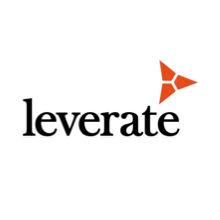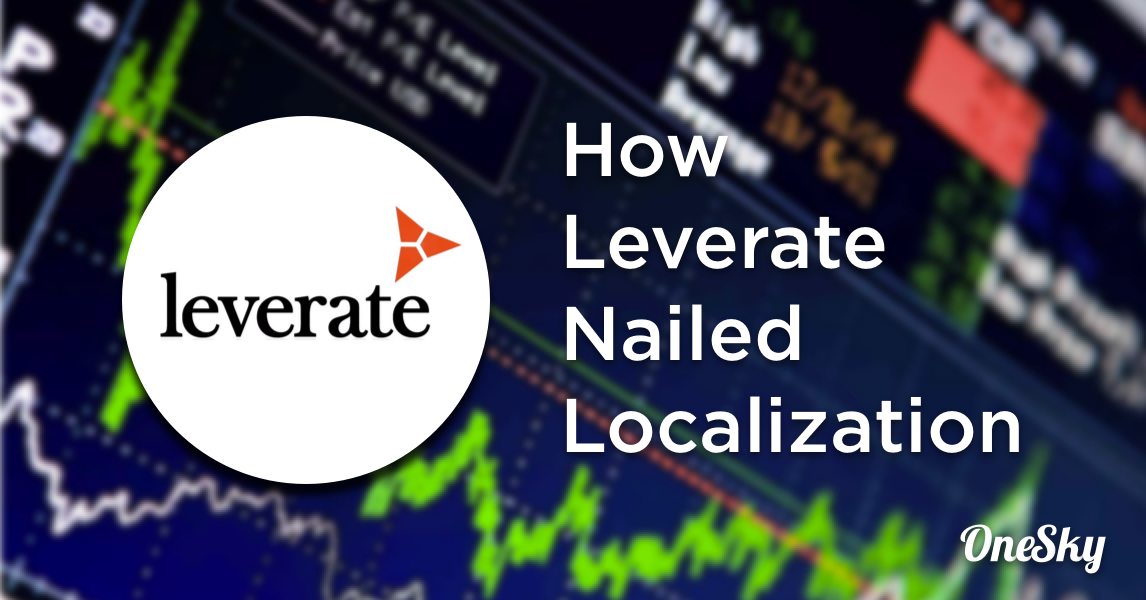From Spreadsheet to Cloud Platform – Here’s How Leverate Nailed Localization
This interview is part of our series “Bring It to the World,” which is crafted for developers of websites and apps that offer localized versions to users worldwide.
We’re catching up with some of OneSky’s best-known users in order to ask them about their localization experiences, and to discover some of their secrets for building a global presence. In this installment of the series, we chat with Itai Damti, CEO APAC at Leverate, a fintech provider specializing in complete brokerage solutions.
Q&A with Itai Damti, CEO APAC at Leverate.
Congratulation on Leverate acknowledged as “Best Forex Software Developer of 2014” in China. How do you feel about the prospect of fintech in China?
Thanks a lot! Fintech is becoming a global monster industry and China is no exception. In fact, it’s quicker than almost any other nation to adopt and produce financial innovation. Things are moving at a staggering pace from retail investments to mobile payments to P2P lending. We see high demand for our technology as more investors in China are seeking cutting edge trading platforms, and more financial institutions choose to enter the game and cater for those needs.
Can you share to us what inspired you to start Leverate?
Leverate has a pretty special story. We started as a group of 4 hackers, at first without any intention to become a B2B company. We actually built a secret distributed platform that could identify pricing mistakes among FX brokers and take advantage of them to make financial gains (it’s called “scalping” but we put it on steroids really). In 2008 we raised seed funding based on that idea, created an in-house fund and started operating. It worked especially well in the stormy days of the 2008 financial crisis. At some point we realized that hackers like us were inflicting major losses on FX brokers, so we crossed the road to become a B2B “antivirus” company- we started delivering high quality data to help FX brokers protect themselves from scalpers. We went on to develop a long series of products that help brokers run their business more effectively, from risk management and FX liquidity access to trading platforms. In 2009 we decided to wrap all of our products in a SaaS package called LXSuite. This package covers every piece of technology that FX brokers need and it’s our main business today. Our B2B2C product line has more than 10 products that touch millions of professional users, both the broker and its retail traders.
How did you come up with the idea of localization? What is the best appropriate moment, do you think, to localize your product?
We started localizing in 2010. The first product we localized was Sirix Web, a trading platform that our clients (brokers) offer to their customer base (traders). Brokers who target 10-20 different markets found the web platform very effective and they started passing us lists of languages they want to cover. As for timing, I believe greatly in solving real world problems and not embarking on unnecessary adventures. As the PM, you should only localize when a client or someone in your company (e.g. marketing, sales) expresses a need for that. And start small. You can always cover more languages and products ad-hoc.
How did you find OneSky? Did you try any other localization solution before?
We found OneSky on the web while researching for solutions. Before OneSky, we ran on the extraordinary machine that is Microsoft Excel. It helped us get things done for 2-3 years but it lacked pretty much everything: API’s, collaboration, access control, quality control and (of course) translation services. We also tried Pootle (open source) for a while, but it required self-hosting and we found it pretty unstable.
What are the top three things/features you love about OneSky? Why?
Support for both in-house and paid translators- before choosing OneSky in early 2014, we were inviting key clients and employees to help us localize every version. This practice helped us to adhere to the financial lingo, cut costs and control the translation timeline. We liked OneSky because it’s first and foremost a world class translation management tool for us and our translators. It allowed us to continue working in the same way while slowly increasing our reliance on paid translations. Today we rely on paid translations almost completely.
Pricing- for a small product line, pricing might not vary largely between the alternatives in the market, but our product line isn’t small. Leverate develops 12 different products in 3 lines of business. We support more than 20 languages and maintain a translation database of more than 600,000 words. We came with a big initial database, and we knew that new products, versions and languages will keep growing it. We liked that OneSky doesn’t charge on the size of the database but on the actual value that we get from it (users and translation services). The alternatives would have been much more expensive.
Glossaries- in highly professional business domains like finance, your language must be precise and consistent across all channels. Having glossaries is extremely useful for enforcing this consistency. In particular, I like that we can separate glossaries as we have several lines of products that don’t share language (by design).
What’s your app localization process?
When we start working on a new product or a new version, we pass the new translation units to OneSky via its API.
The product manager then talks to internal translators and/or orders the translation within OneSky. Contributions are often reviewed by clients and Leverate staff who speak the relevant language.
We pull the translations to test that screen elements adjust nicely to non-English languages (usually manually). Fixes are made as needed.
Right before the release we pull the translations from the OneSky API and include them in the build.
Can you share any figures to demonstrate Leverate’s growth after localization?
We have started localizing quite in 2010, quite early in the life of our product line, and our business today spans the entire globe thanks to that. We have offices in 5 offices across the world (including Hong Kong and Shanghai) and serve 150 brokers. Our platforms are distributed to their traders, who are spread across more than 80 countries, and generate a trading volume of over $100b / month. We have recently found that 60% of those traders prefer Sirix (our trading platform) over the alternatives, and localization has a big part in it.
What are the biggest challenges you had when localizing your app? How did you resolve them?
At some point every new version became a project that required lots of people coordination across all supported languages. We had to delay releases waiting for translators to finish their job, or release a partial translation which our users never liked. Now we have a solution: we give internal translators (clients, employees) a good notice before a new version is out, and invite them to contribute in their language. If they don’t have time to do it, we use OneSky to order the missing translations.
Besides localization, any growth tactics towards international expansion to share?
Absolutely. In 2014 I left my role as VP Products and moved to Hong Kong to lead our expansion in APAC, with focus on China. Managing this part of the world changed everything I thought I knew about localization. In the product management world, localization is synonymous with translating your product. But reality is very far from that. The product side will demand 2% of your localization efforts. The remaining 98% are localized sales processes, localized pricing, localized marketing channels, localized customer service, localized recruiting channels, localized business network and so on. Once you decided to set foot in a new market, my advice is to start localizing your entire business, not just your product, as early as possible. You don’t want to be yet another global company who failed because it didn’t understand a new market (e.g. eBay losing to Taobao in China). The amount of localization work is overwhelming, so make sure you choose your battles (or at least put them in order…).
Can you share your biggest insight learned from building a worldwide fintech platform?
In such a complex business domain, there’s nothing more critical than the quality of your team. Build a diverse team of big brains, from business to technical, and create a culture that doesn’t stand in their way. PayPal were fintech before Fintech was cool and they walked every bit of this walk- I admire them for that.
About Leverate

Leverate is a B2B fintech company providing end-to-end solution to FX brokers, with 160 employees in 5 offices and over 150 clients all over the world. Their team chose OneSky as a translation solution for our entire product line early in 2014.
Visit their company website at www.leverate.com.
About Itai Damti

Itai Damti Co-founded Leverate in 2008. He is currently heading the company’s activities in Asia Pacific as the CEO of Leverate Hong Kong, and spends his time between HK and Shanghai, taking the company’s strategy, growth and operations into Asia with full power. Before moving to HK, he started the company’s product management team and served as VP Products for 3 years. Originally a long time engineer, Itai has a strong passion for startups and growth stage companies. He actively mentors and invests in early stage startups, and loves to take part in techpreneurship circles from Tel Aviv to China.Follow him on Twitter or connect with him on LinkedIn.



 Written by -
Written by - 


 Written by
Written by 



Thanks for Sharing this article
Johanathan Smith,
Turnkey brokerage solutions provider